A couple of weeks ago I wrote about locating several old cemeteries for the various textile mill villages in Greenville. In the article I said that I was disappointed that I had not been able to visit the Brandon Mill Cemetery, as it was overgrown and off-limits.
I had posted a link to the blog post on one of the Greenville discussion groups on Facebook, and it generated quite a bit of discussion. Teresa Slack posted a comment that they would be organizing a clean up of the Brandon Mill Cemetery. I knew that I had to attend.
The event was scheduled to begin at 8:30, and I arrived just a bit before 9:00. St. Mary AME Church was graciously allowing people to park on their property.
I could hear power equipment already in use. It sounded like there was already quite a bit of activity. A path had been opened behind the automotive shop on US 123 with access to the cemetery site.
Three women were standing at the entrance to the site. I walked over to introduce myself and see what was going on. Two of the women accompanied me onto the site. One was Teresa Slack, organizer of the clean-up, and Barbara Wood, wife of the pastor of St. Mary AME.
Barbara said that the plot was owned by the lady who had lived in the house at the end of Melrose Street. It was sold to her for the price of $1. She and Teresa found some irony in the fact an African American family now own a cemetery that had once been segregated for Whites only.
Barbara returned to the church and Teresa gave me a brief tour of the site. Turns out she is working on a documentary for PBS on textile mill life in Greenville. She pointed out the boundaries of the cemetery plot and the headstones that were currently visible, as well as indentations that probably indicated unmarked graves. She said she hoped to come in with a metal detector when things were a bit more cleared so that they could locate all of the graves.
Much of the central area had already been cleared. I started with the most visible headstones, snapping photos of all that I found. These were very much like the ones I’d seen in other textile mill cemeteries in the area.
As with the other old cemeteries I’d explored, there were several grave markers for infants. One had the lamb symbol, sans head. Others were simpler, marked with just the name “Infant” followed by the parents’ names. One was a bit more perplexing. The symbol looked more like a griffin or a manticore than a lamb.
As you might imagine in a long-neglected cemetery, some stones had not fared well at all. Some had been knocked over either by falling limbs or by intentional mischief. Yellow tape had been stretched around areas yet to be cleared so that further damage wouldn’t be done to those stones.
There was what appeared to be a trash dump on the property. In addition to broken bottles throughout the plot, one small area had a concentration of glass.
A Bobcat with a front-mounted mower was at work in one corner of the plot, and I could hear other equipment in a different corner. The Bobcat operator turned out to be Deputy Ryan Reid from the Greenville Sheriff’s Office. He came over and introduced himself, and we chatted a bit about what he had found. Firemen from the Parker Fire District Station were busy clearing another part of the cemetery.
As Deputy Reid and I were talking a family arrived. The Payne Family had relatives buried in the cemetery, and were searching for those headstones now that they had access. I was introduced to the members of the family, including Angie Payne Keith, with whom I’d already met through Facebook.
The Payne Family was able to locate their great-grandfather, W. T. Payne. Fortunately, that stone was in excellent condition, and was in a place that had already been cleared.
Angie and her family had brought equipment to assist with the clean-up. I, on the other hand, had only brought cameras, and was ill-prepared to assist. I was also unable to stay because of other obligations. Deputy Reid went back to his Bobcat to begin clearing a 10-foot buffer around the property, and I said my goodbyes to the folks I’d met. I took a few more moments to take some photos, then headed out.
I didn’t get to see the Brandon Cemetery before clean-up began, but I could tell a huge difference between areas that had been cleared and areas that had not. The folks that were working had done an outstanding job so far, but they were already talking about future clean up dates. Regardless, Teresa and her volunteers from the sheriff and fire departments have already done an outstanding job. It was great to see the community coming together to reclaim this piece of history.







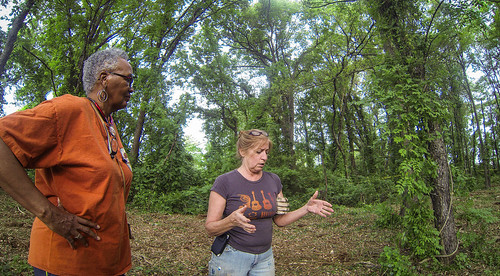



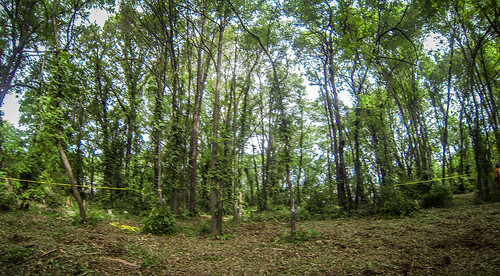

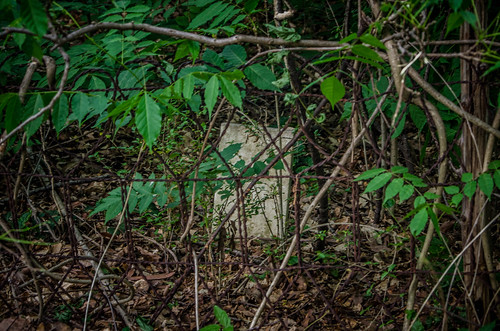









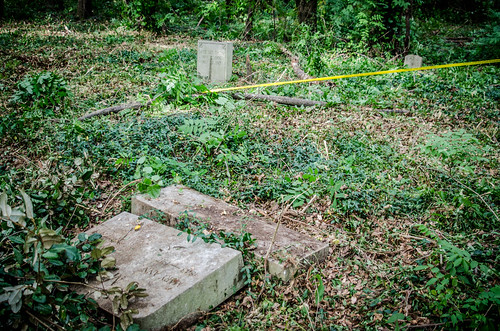







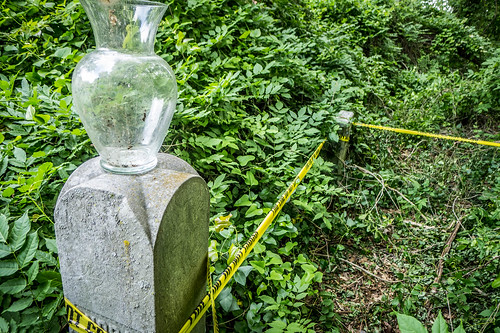







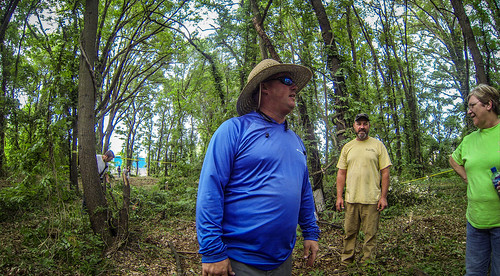











just 1 word WOW
The grave with the broken rake stuck in ground is that of John A Mize, my third great grandfather.